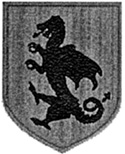 The army I used in the first Medieval Warfare tournament was War of the Roses Yorkists. I painted it up and used it because I enjoyed reading about the period and thought that in using a Yorkist version I might somehow be able to emulate its principal leader, Edward IV – who never lost a battle with it himself…. As it turns out, I managed to sweep all three games and win the tournament!
The army I used to do this was a high firepower, high tech outfit using all 4 stands of artillery, 20 stands of retinue longbowmen in 5 units of 4 stands each (all equipped with stakes), and 8 or 12 retinue billmen in 4 stand units (all equipped with pavises). I kept one unit of mounted Men at Arms with a General for a mobile reserve and counterattacking force and a small unit of dismounted Men at Arms to stiffen the infantry center. Normal deployment had longbow units on each flank with a bill unit next to it and 3 longbow units in the center supported by the dismounted MAA. The artillery would be on a hill, and possibly the infantry as well if that could be arranged, although I often used obstacles to shield the archers instead. The mounted MAA were generally deployed in reserve towards the flank that was more open or potentially threatened.
The army I used in the first Medieval Warfare tournament was War of the Roses Yorkists. I painted it up and used it because I enjoyed reading about the period and thought that in using a Yorkist version I might somehow be able to emulate its principal leader, Edward IV – who never lost a battle with it himself…. As it turns out, I managed to sweep all three games and win the tournament!
The army I used to do this was a high firepower, high tech outfit using all 4 stands of artillery, 20 stands of retinue longbowmen in 5 units of 4 stands each (all equipped with stakes), and 8 or 12 retinue billmen in 4 stand units (all equipped with pavises). I kept one unit of mounted Men at Arms with a General for a mobile reserve and counterattacking force and a small unit of dismounted Men at Arms to stiffen the infantry center. Normal deployment had longbow units on each flank with a bill unit next to it and 3 longbow units in the center supported by the dismounted MAA. The artillery would be on a hill, and possibly the infantry as well if that could be arranged, although I often used obstacles to shield the archers instead. The mounted MAA were generally deployed in reserve towards the flank that was more open or potentially threatened.
The artillery generally ensured that an opponent wouldn't sit on the defensive and just get hammered to pieces. That, plus a modest advance by the infantry (preferably to good defensive positions, such as the obstacles) usually forced the issue and brought the enemy forward to try to contact my army. I was normally able to badly shoot up or sometimes stop in its tracks enemy attacks before they reached me. Unarmored or lightly armored troops or even heavy cavalry tended to fall in droves and their charges were often met by a deadly arrow barrage followed by stopping short trying to get through the planted stakes or obstacle to their front. The exception was a battle against an Italian condotta army where the heavy infantry and Full Plate Condottieres were able to close quickly and fight a nasty, deadly melee along a fairly wide front that I only just held and eventually repelled.
The army used then differs somewhat from the army I would use today. Archers can fire up to 3 stands deep, infantry types can intermix in the same unit, and the introduction of the ammunition rules and the reduction in penalty for crossing stakes makes the longbowmen a bit less effective and thus the army composition of yesterday less optimal or secure.
The numbers and types of troops would be nearly identical (because I haven't painted up any more troops…) but I think I would arrange them differently. I would start with 4 units each with 2 stands of retinue billmen with pavise and stakes and 4 stands of retinue longbowmen backing them up. I would intersperse 2 units each with 2 dismounted men at arms and 2 retinue billmen between them. One unit of 4 veteran longbowmen with both pavise and stakes would defend one flank. A small 2 stand unit of mounted Men at Arms would remain as a reserve near the artillery and the supply wagons. I would only take 2 generals in order to afford this expensive, small army. You need a hill for the artillery and a river or water feature to anchor a flank and shrink the board will be extremely useful. Dense terrain can also serve to protect a flank if water is not available for some reason. If you can force a frontal engagement with a decent defensive position you should be able to inflict heavy damage and exploit a crack to win – smart, patient positioning and good timing are required, but will pay big dividends with this army.
Back to Saga #80 Table of Contents
Back to Saga List of Issues
Back to MagWeb Master Magazine List
© Copyright 2001 by Terry Gore
This article appears in MagWeb (Magazine Web) on the Internet World Wide Web. Other military history articles and gaming articles are available at http://www.magweb.com